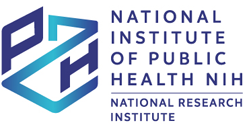RESEARCH PAPER
Analysis of selected organochlorine pesticides in honey samples from Poland: a pilot study
1
Department of Toxicology and Health Risk Assessment, National Institute of Public Health NIH - National Research Institute, Warsaw, Poland
2
Merit Mark Polska, Poland
Submission date: 2025-07-18
Final revision date: 2025-07-31
Acceptance date: 2025-08-07
Online publication date: 2025-08-19
Publication date: 2025-10-07
Corresponding author
Radosław Lewiński
Department of Toxicology and Health Risk Assessment, National Institute of Public Health NIH - National Research Institute, Chocimska 24, 00-791, Warsaw, Poland
Department of Toxicology and Health Risk Assessment, National Institute of Public Health NIH - National Research Institute, Chocimska 24, 00-791, Warsaw, Poland
Rocz Panstw Zakl Hig 2025;76(2):137-145
KEYWORDS
TOPICS
ABSTRACT
Background: Organochlorine pesticides (OCPs) were widely used in crop protection in the past. Due to their high chemical persistence and widespread presence in the environment, they have been classified as persistent organic pollutants (POPs). Given their toxicological properties, dietary exposure to OCPs may lead to adverse health effects in humans. Objective: The aim of this pilot study was to analyse selected obsolete OCPs (DDT, its metabolites and isomers, as well as dieldrin and heptachlor) in honey samples and to assess the associated health risks resulting from the intake of these compounds for children and adults. Material and Methods: The study included 79 honey samples collected from various regions of Poland. The samples were prepared using the modified QuEChERS method. The tested substances were determined in honey using gas chromatography with an electron capture detector (GC-ECD). Health risk was characterized using a deterministic method by comparing the intake of the residues from a large portion of honey with toxicological reference values. A conservative approach was used to estimate short-term exposure using 0.5 × LOQ (limit of quantification) values for substances detected at levels below the LOQ. Results: None of the OCPs analysed were detected above their LOQs. Only in two samples,
p,p’-DDE and dieldrin, were detected at levels above the method’s limit of detection (LOD). The results indicate a negligible health risk for consumers associated with the intake of these substances from honey. Conclusions: The results indicate that levels of tested organochlorine pesticides in honey are low. The risk associated with exposure to the analysed OCPs, at the assumed levels, through the consumption of honey available in Poland can be considered negligible.
We process personal data collected when visiting the website. The function of obtaining information about users and their behavior is carried out by voluntarily entered information in forms and saving cookies in end devices. Data, including cookies, are used to provide services, improve the user experience and to analyze the traffic in accordance with the Privacy policy. Data are also collected and processed by Google Analytics tool (more).
You can change cookies settings in your browser. Restricted use of cookies in the browser configuration may affect some functionalities of the website.
You can change cookies settings in your browser. Restricted use of cookies in the browser configuration may affect some functionalities of the website.



